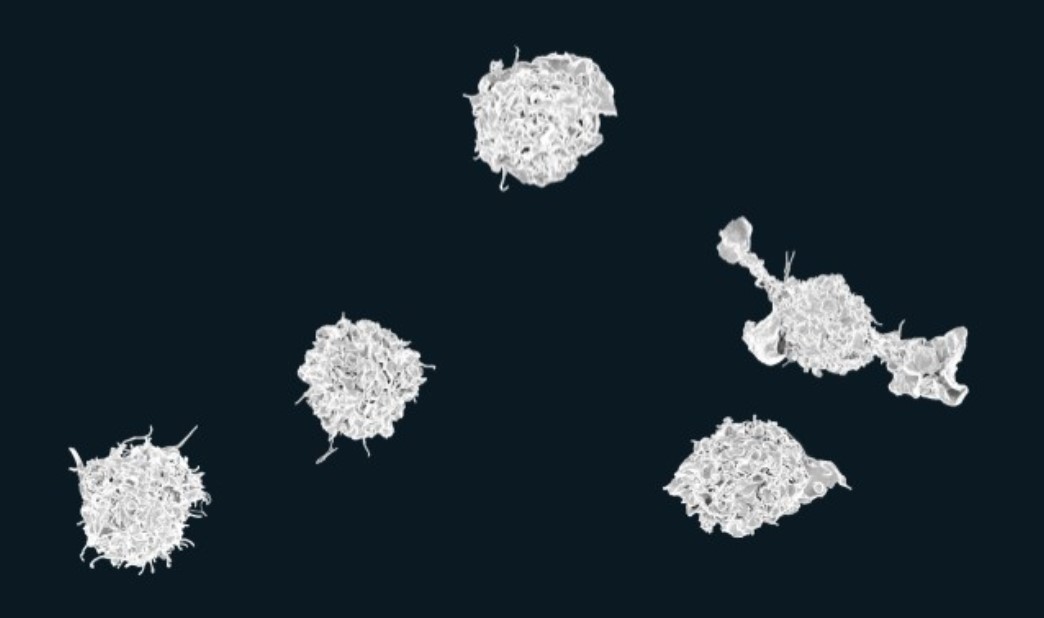


The aim of the work was to detail the involvement of macrophages in the process of muscle pain chronification (image: NIAD-NIH)
Published on 04/28/2025
By Maria Fernanda Ziegler | Agência FAPESP – A study conducted at the State University of Campinas (UNICAMP) in Brazil investigated the process of muscle pain chronification – that is, when it goes from acute to chronic – and identified one of the mechanisms by which physical exercise prevents this transition, protecting the body from inflammation and persistent pain. The results were published in the journal PLOS ONE.
The aim of the study was to detail the involvement of macrophages in this process. This is because data from the scientific literature already indicated that these defense cells play a key role both in the onset of the acute phase of inflammatory muscle pain and in the transition to chronic pain.
Through experiments with mice, the researchers discovered that a receptor present on the membrane of defense cells (called P2X4) is one of those responsible for triggering the chronicity of inflammatory muscle pain. Another important finding is that physical exercise can activate a signaling pathway common to P2X4, making the macrophage anti-inflammatory and thus preventing the chronicity of muscle pain.
“We observed in mice that activation of the P2X4 signaling pathway in the macrophage is prevented by exercise, avoiding the transition from acute to chronic pain. In this way, we were able to describe one of the mechanisms by which physical exercise can prevent muscle pain,” says Maria Cláudia Gonçalves de Oliveira, coordinator of the Laboratory for Pain and Inflammation Studies (LABEDI) and author of the article.
According to Oliveira, the findings pave the way for the development of drugs or new protocols to combat muscle pain.
“Countries like the United States and Canada are experiencing an epidemic of opioid consumption, and there are efforts to reduce the use of these drugs in the treatment of chronic pain. Thus, by understanding how physical exercise acts to prevent chronicity, it’s possible to identify alternatives for new drugs that act synergistically with physical exercise in a more specific and safe way for muscle pain,” says the researcher.
Experiments
In the study, mice underwent periodized swimming exercise of progressive intensity, five days a week for four weeks.
After this period, the researchers simulated an inflammatory muscle injury in the animals, resulting in intense pain. “Since the inflammation caused by the stimulus was not treated, it was expected to induce a series of changes in the muscle tissue, leading to an increased predisposition to chronicity. However, this was not observed in the animals that exercised before the inflammatory stimulus,” says Oliveira.
Using pharmacological and biomolecular analyses, the researchers found that exercise inhibited a signaling pathway common to P2X4 receptors in macrophages, thanks to the activation of receptors called PPAR-gamma, which has already been associated with the prevention of muscle pain by exercise in previous studies.
“We suggest that the activation of P2X4 signaling [mediated by a protein known as p38 MAPK] generates macrophage activation and an increase in inflammatory cytokines. And we observed that exercise, through PPAR-gamma, modulates the activation of p38 MAPK. However, we still don’t know whether this process occurs by directly inhibiting P2X4 receptors, by controlling p38 phosphorylation [a biochemical process that adds phosphate groups to the protein and regulates its function], or by increasing the anti-inflammatory profile of macrophages,” she says.
The researcher also points out that the pathways appear to converge in the regulation of inflammatory muscle hyperalgesia, providing a framework for understanding the molecular and cellular basis of the progression of muscle pain in inflammatory conditions. “The acute phase of inflammation, characterized by phosphorylation of p38 MAPK and polarization of macrophages towards a pro-inflammatory phenotype, represents a critical period for intervention. Therefore, exploring the ideal period for intervention with P2X4 antagonists [molecules that inhibit receptor function] or PPAR-gamma agonists [molecules that activate the receptor] could optimize therapeutic efficacy,” say the authors.
The research was supported by FAPESP through two projects (21/02921-2 and 18/13599-1).
The article “Macrophage-P2X4 receptors pathway is essential to persistent inflammatory muscle hyperalgesia onset, and is prevented by physical exercise” can be read at: journals.plos.org/plosone/article?id=10.1371/journal.pone.0318107.
Source: https://agencia.fapesp.br/54593